Welcome to the Bell Town of Gescher
Welcome to the Bell Town of Gescher
Gescher, together with its southern district of Hochmoor, has a population of around 17,000 (as of mid-2019). The town looks back on more than a thousand years of history. Formerly a modest street village, it has undergone many changes, especially during the last 150 years. The village began to grow strongly from the start of industrialisation. In 1969 it received its town charter after incorporating the surrounding communities of Harwick, Tungerloh-Capellen, Pröbsting as well as Estern and Büren. Numerous buildings, neighbourhoods as well as green spaces have been transformed over the years, sometimes more than once. Traces of this are still reflected by today’s townscape.
Two trails - one project
Come along and feel free to explore Gescher’s History Trail and Planet Trail. The 6-km circular route is marked by signs and runs from Haus Hall through the centre of town and the park up to the north-eastern greenbelt in Berkelaue.
Gescher History Trail
The History Trail consists of 15 stations in Gescher and Hochmoor, all strikingly designed. Each station has three boards with texts and pictures on the town’s history and its natural environment. Each station is located at a point of interest in the urban space.
Here the town's history is brought to life by accounts of its textile industry, bell-founding, urban development, distinctive buildings and social life. Locals and visitors alike can learn interesting facts and key aspects of the town's history. Important data and stories about individual persons and events in the context of the town's history give a vivid impression of Gescher and its natural environment, which is dominated by the river Berkel.
GescherPlanetary Trail
Why not take a journey through our solar system, right here in Gescher? The eleven stations on the Planetary Trail are a model of our solar system on a scale of 1:1 billion. The trail starts just 400 metres east of Station A 1 and joins the History Trail at Bahnhofstrasse. Visit the “Sun” Station on the grounds of House Hall to find out more.
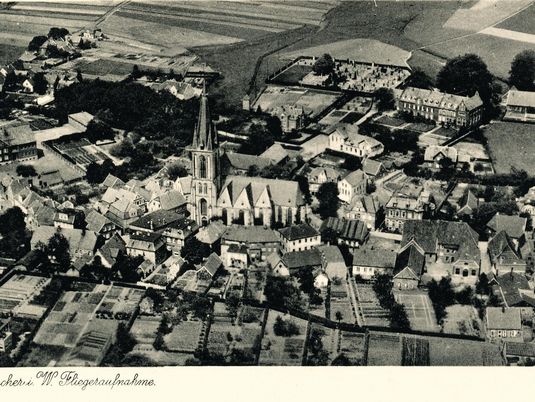
Früheste Luftaufnahme
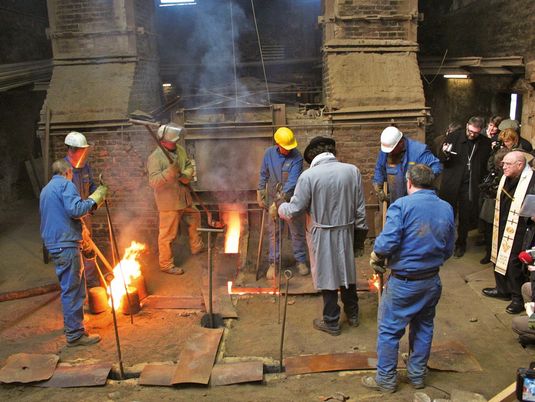
Bronzeglockenguss seit 1690
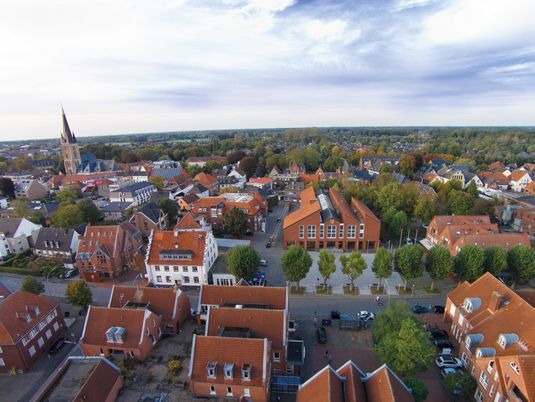
Stadtkern 2020
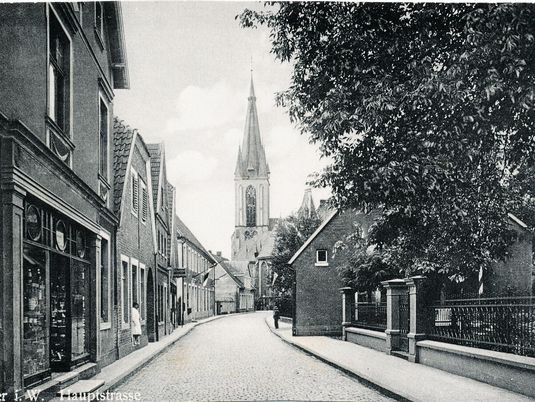
Hauptstraße um 1930
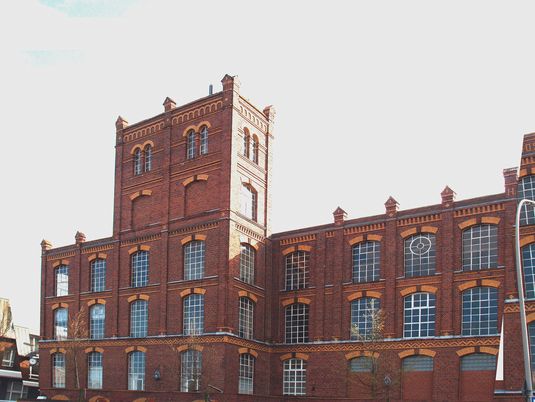
Dominante Industriearchitektur
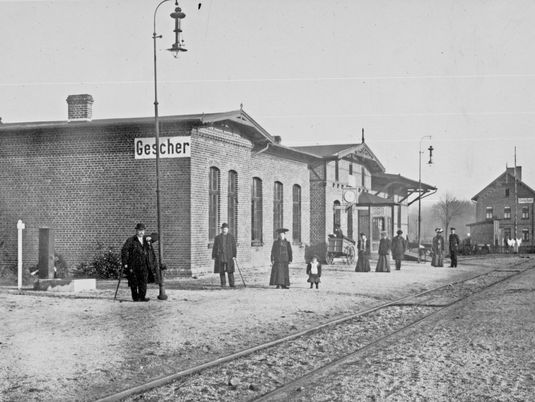
Bahnhof Gescher um 1908
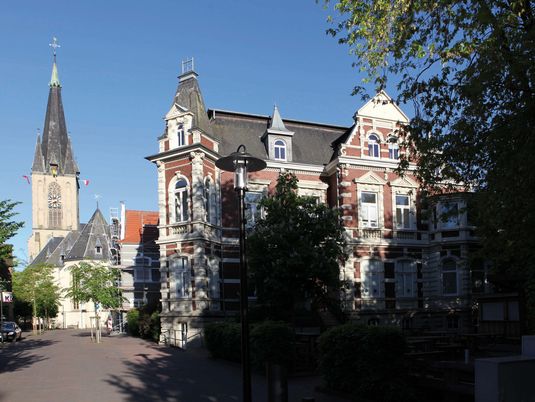
Hauptstraße mit Villenbebauung
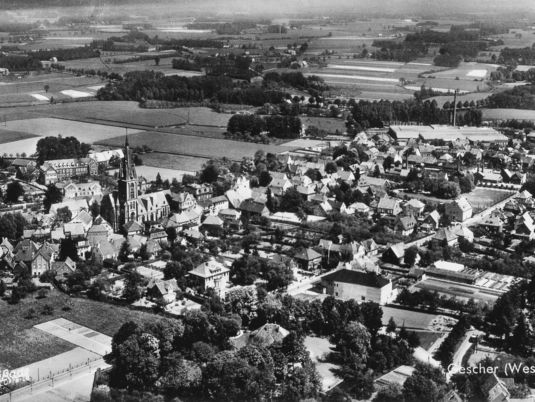
Ortskern um 1955
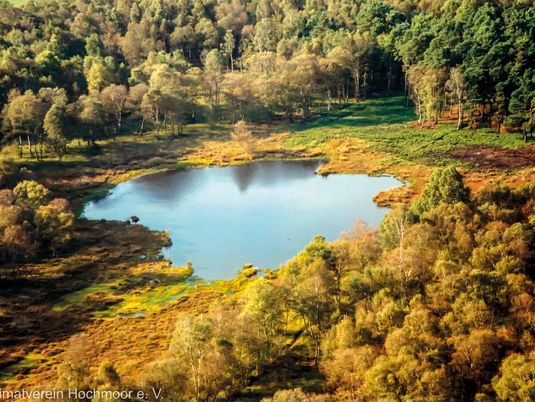
Naturschutzgebiet Fürstenkuhle
The (new) town hall
The (new) town hall - result of a long planning process
The old town hall on Lindenstrasse, built in 1901 and today the Heinrich-Hörnemann-Haus, proved to be far too small for the local government in the mid-1960s. Several departments had to be moved to nearby public buildings.
In 1964, the city launched an architectural competition (36 participants) for a new town hall to be situated on the former market and fairground on Hofstrasse. The project, however, was put on hold for several reasons, one of which was lack of funds.
In a new attempt, a framework plan for the future urban development was prepared in 1977. It clearly showed that the former market place would be the best location for a central trade and service centre including a new town hall.
In 1980 further expert opinions based on the existing framework plan were obtained. The winning design by architect Harrendorf from Beckum was, however, rejected at a later stage due to its bulkiness. Eventually, the local firm of Bock, Schmidt und Partner was entrusted with a reduced, alternative plan which served as the basis for a new town hall competition launched in 1985. Ten architect’s offices joined in the competition, which was won by Braunschweig-based architects Kraemer, Sieverts und Partner. At last the town hall could be built and became the centrepiece of the new service centre. It was ceremonially opened in 1989.
In the years following, extensive construction work was carried out around the town hall when trade, service and residential buildings were developed in contemporary style, also in accordance with the existing framework plans. The old buildings south of Hofstrasse had to be completely demolished for this.
In 2014/15 the area south of Hofstrasse underwent another fundamental change. The area, including the Catholic Church of St. Mary's Assumption, which has been under protection and secularised since 2010, was reorganised. A residential complex suitable for senior citizens was created. Further information can be found at the next station.
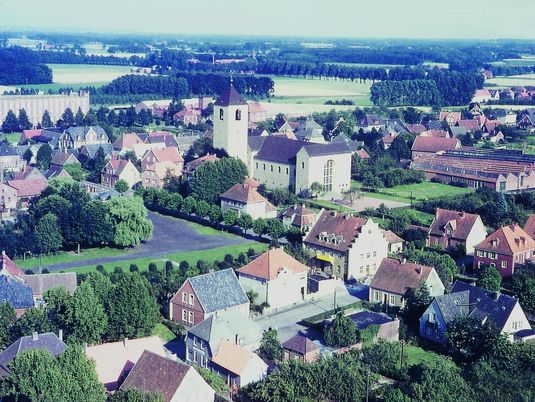
Standort Neues Rathaus - Situation 1950er Jahre
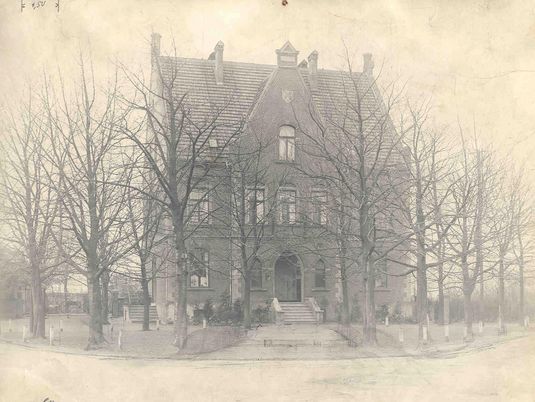
Altes Rathaus vor dem 1. Weltkrieg
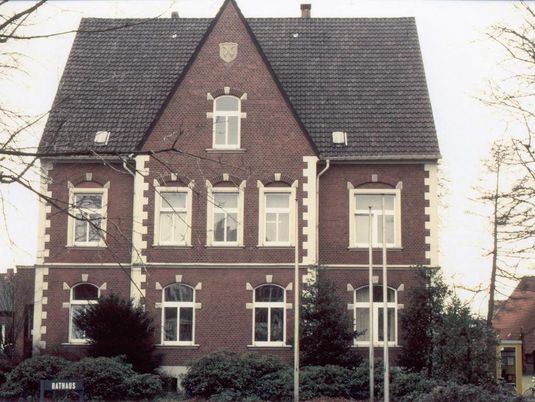
Verändertes Rathaus um 1980
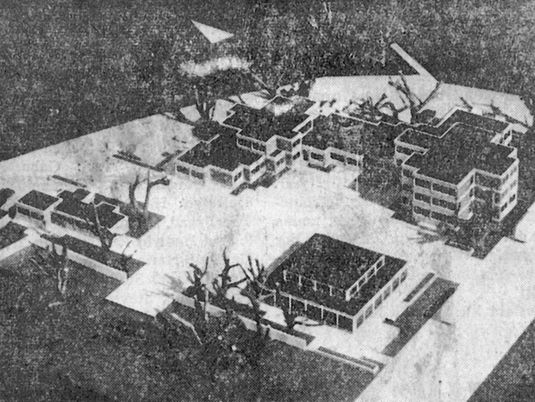
Rathauswettbewerb 1964
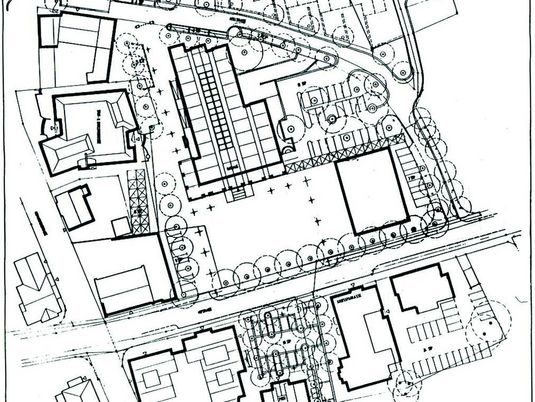
Neues Rathaus – Lageplan
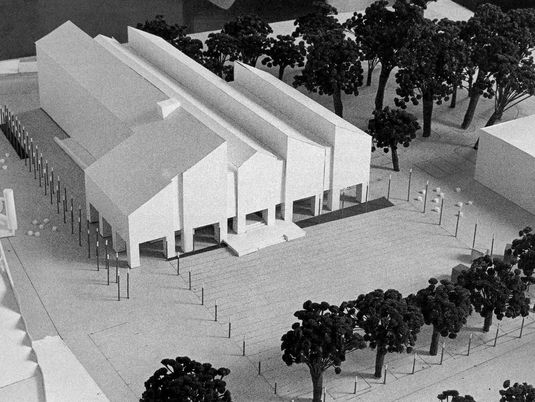
Wettbewerbsmodell 1985
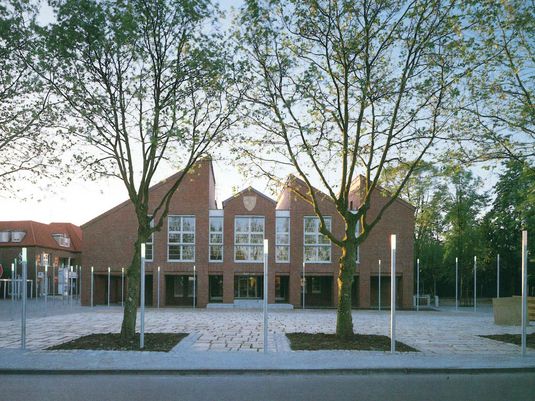
Das Ergebnis 1989
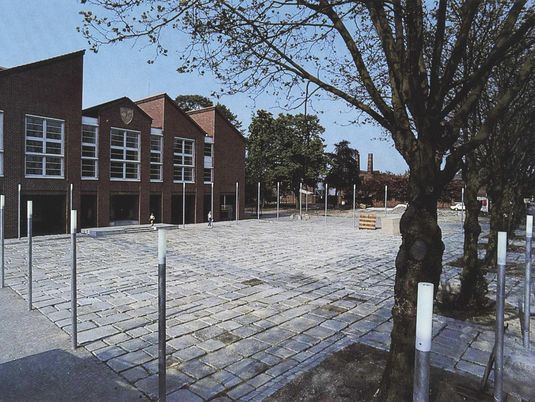
Südfassade mit Marktplatz
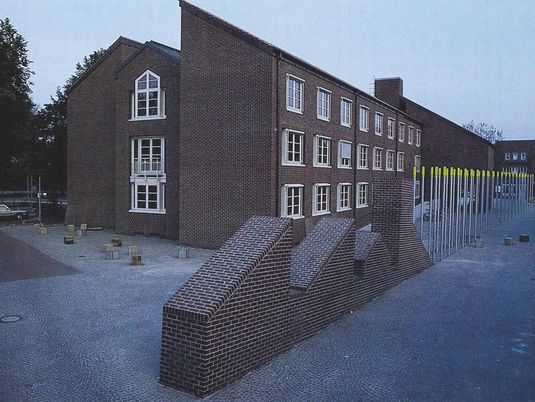
Seitenansicht Nordwest
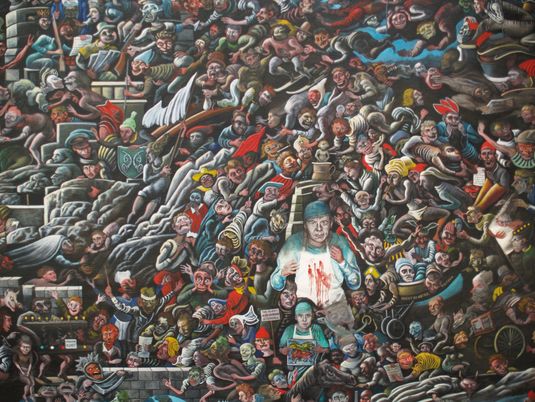
Rathausbild im Innern
Art in and around the town hall
Art in and around the town hall
The construction of the new town hall and surrounding urban space offered the unique opportunity of letting them come alive with art. The Council convened an Art Commission in 1987 in order to achieve this ambitious goal and ensure high quality. Chaired by Dr. Bernhard Huskamp, experts from art and architecture worked together with representatives from the council and the administration. Their collaboration was at times rather controversial, but it produced surprising results.
The council decided to implement the idea of Swiss artist Andreas Straub for the exterior design, with its catchy name Game of 6°. Straub referred to the 6 degree angle between the building fronts of the new town hall and the new post office (today’s Caritas centre for dementia patients). This geometry of the urban space was commonly reflected by the objects Brick Sculpture by Straub, Light Poles - Alley as well as Lighting Square by Dutch artist Jan van Munster and Game of Dice by German artists Balduin Romberg and Ekkehard Neumann.
The market place in front of the town hall has been used for many events, for example the proclamation of the prince and the start of processions at carnival, the rallying of the huntsmen, after-work markets in the summer and as a public TV arena at major sporting events. The old custom of sweeping the town hall stairs is playfully continued, carried out by young unmarried folk hoping to be released by a kiss.
The town hall gallery
The Art Commission has also left its traces inside the town hall. In 1989, the Council commissioned Italian artist Corrado Simeoni to produce a painting measuring 36 square metres on the wall facing the council hall. He created it in Venetian style and evocatively named it "The Masquerade". Even before it was finished, it caused a small art scandal due to a number of provocative depictions shown. "Filthy" or even "jester’s porn" were some of the accusations made. When numerous media reported on the quarrel, Gescher’s art project was widely talked about. Today this is a story of the past and the work is an absolute must on guided tours of the city. The town hall itself is a space for temporary exhibitions or the presentation of permanent loans from top-class artists such as Rizzi, Alt, Simeoni, Penk and Balkenhol. Today the town hall also provides space for a wide variety of cultural events, concerts, readings and receptions. The town hall is a house for all citizens.
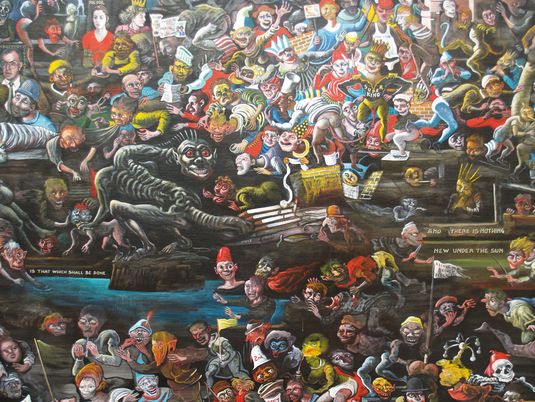
Ausschnitt Rathausbild Maskerade
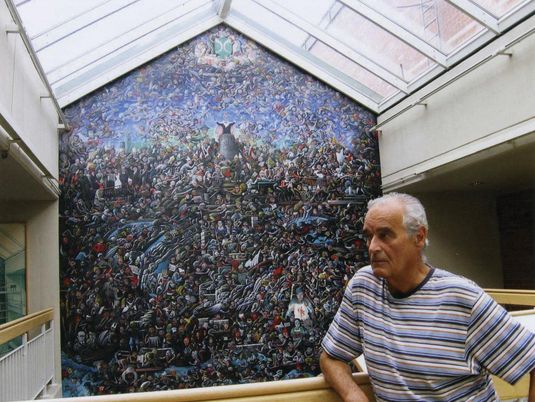
Der Künstler und sein Werk

Provokante Rathauskunst

Rathauskunst im Umfeld
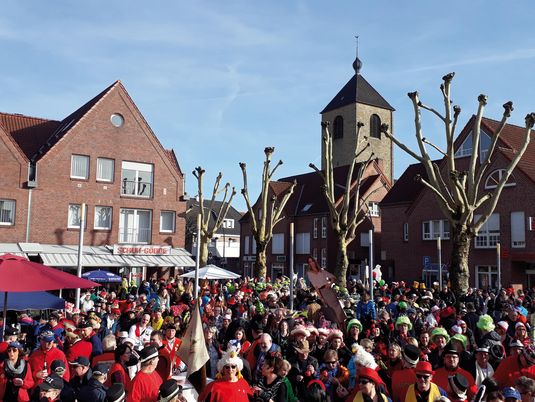
Marktplatzaktivitäten - Karneval
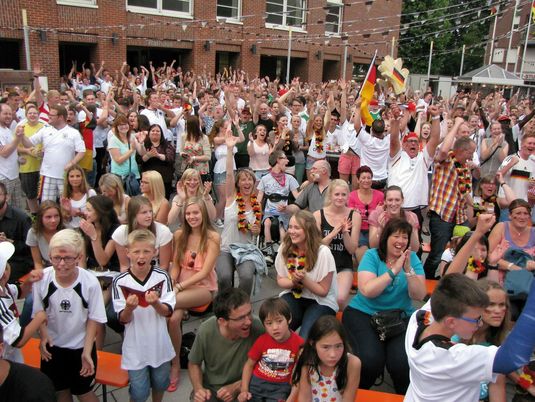
Public viewing
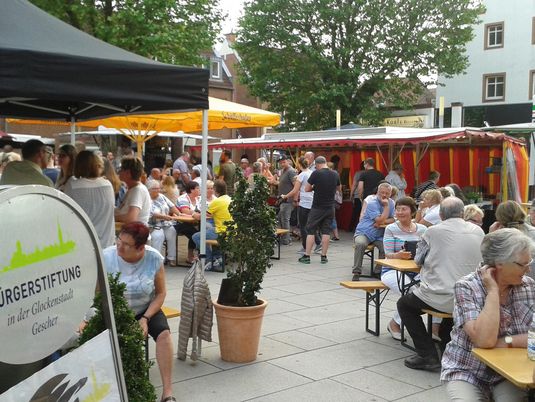
Markttreiben